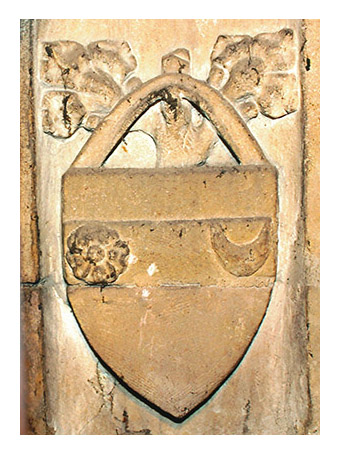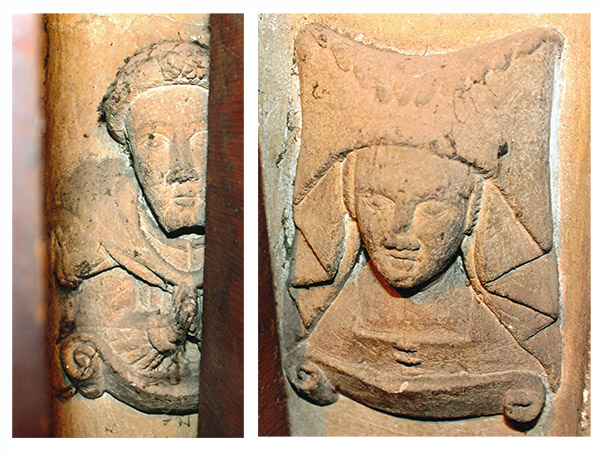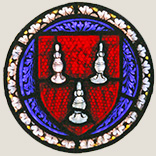Step inside St Mary’s
Step inside St Mary’s and you’ll find a wealth of social, cultural and architectural history stretching back over twelve centuries. Look for a ‘Heritage Trail’ booklet near the North Porch Entrance and you’ll be guided through a a rich discovery of treasures such as the ‘danestones’, remnants of an early baptismal font, signature mouldings of our Mediaeval benefactors, Victorian Gothic renovation and embellishment and beautiful momentos from more recent History. You’ll meet some celebrated, interesting and colourful people from Halesworth’s past. Let’s first introduce you to the Argentines, a family who arrived on these shores with the Norman Invasion and had spread their power base and property holdings to include Halesworth by the 12th century. Thus began the conversion of ‘HALESUWORDA’ from a settlement between two rivers (smaller than the surrounding villages it now serves) into a bustling and thriving market town, endorsed by expanding a small Saxon church into an impressive Mediaeval flint church and tower, which still serves the community and draws visitors to it today.
Heritage Trail and
A Century of Change in a Suffolk Church

The booklets 'Heritage Trail' and 'A Century of Change in a Suffolk Church' are available from the book stall in St Mary's Church. Price 50p.
Mediaeval Carvings - Slide Show
click bottom right for full screen view
Mediaeval carvings behind the organ
see slide show at bottom of page
Over the weekend of 9-10th September, St Mary’s welcomed visitors to the church during the Halesworth Heritage Open Days. Nationally, an annual event to celebrate our country’s history and culture, and offering a chance to see hidden places, all free, Halesworth has opted to do so bi-annually. This year there was a new feature in the church trail.
In May 2017 a chance discovery by David Wollweber, Halesworth & District Museum, in an article in The Proceedings of the Suffolk Institute of Archaeology and History (1996) by Michael & Sheila Gooch and others, indicated that there were carvings on the Norman arch hidden since the installation of the organ in the 1890s.
Contortions by Jason Busby, squeezing into the space, and his clever photography have resulted in stunning images of twenty carvings, which have been expertly mounted by Steve Murray for permanent display in the church.
The carvings comprise of several shields, an abbot or bishop’s mitre, a leaf and berry design, a lion, two angels, a man and two images of a woman. David Wollweber has researched the carvings and, by virtue of their designs, suggests that there are shields for St Peter, St Catherine, St George, St Edmund, St Laurence, St Andrew, St Kilian and St Cecilia.
There is also a shield showing the de Argentein arms (below left), three cups, signifying that they were cup-bearers to kings. A cup-bearer was high ranking in royal courts, and his duty was to serve the drinks at the royal table; the cup-bearer had to be completely trustworthy for fear of plots and intrigue. The de Argentein family were mediaeval benefactors of St Mary’s and their arms can be seen on the south arch by the Lady Chapel, in one of the two remaining pieces of mediaeval glass in the south chancel window and held by an angel on the font.


One shield (above right) has so far defied attempts to interpret it. It shows a rose and crescent on a fesse, (a broad horizontal stripe across the middle of a shield). Extensive research has not revealed the family or person it represents.

Of the remaining carvings, the two angels are both disfigured, one quite badly, perhaps on the orders of William Dowsing during the Reformation. The man looks mediaeval and is wearing quite an elaborate hat; he is opposite one of the carvings of a woman, who is depicted wearing a horn headdress, fashionable around 1410-1440. It can only be supposition to conclude that they are of the de Argentein family.

The mitre perhaps represents the priory under whose auspices the church fell. And finally are left a design of four leaves with berries, perhaps symbolic of Christ's crown of thorns, and a lion, the latter a symbol often seen in Christian iconography.

Thanks to Jenny Janes for this, Steve and Jason for images and everyone involved with the research.
